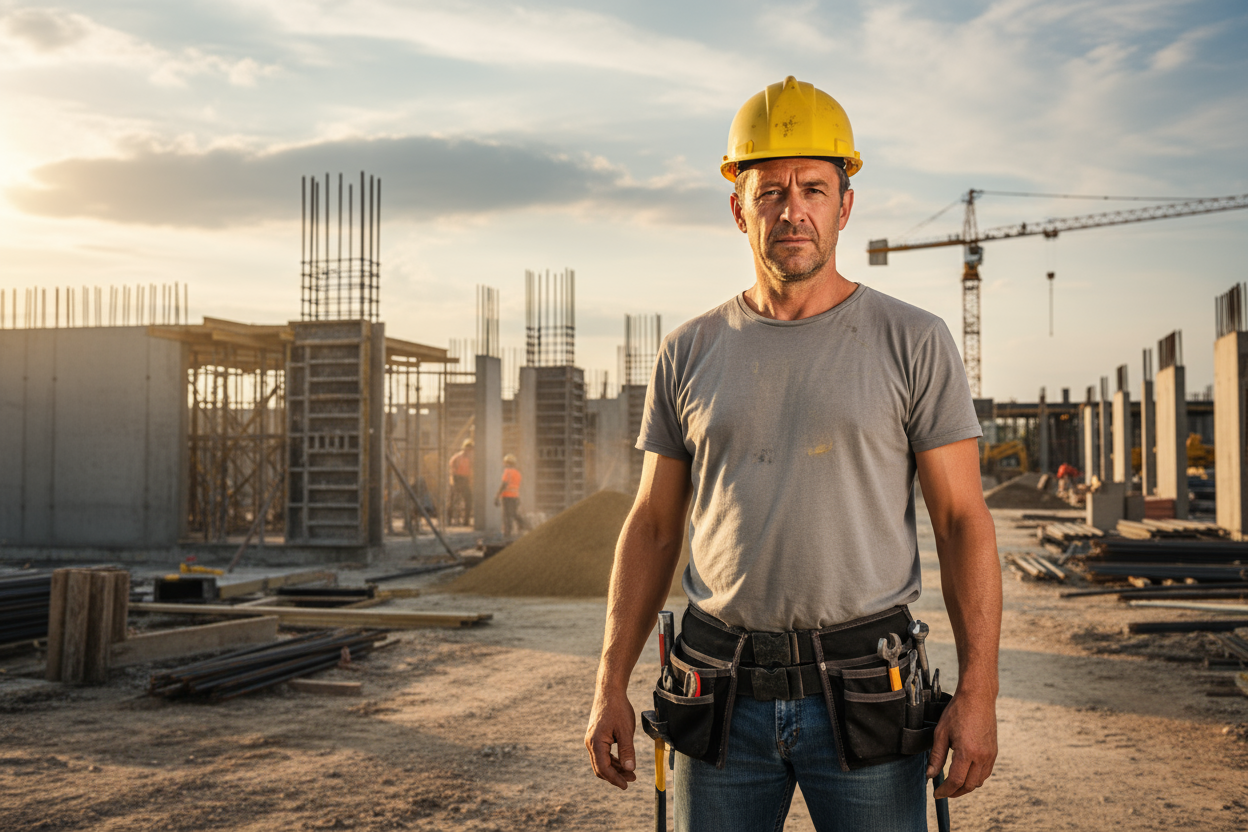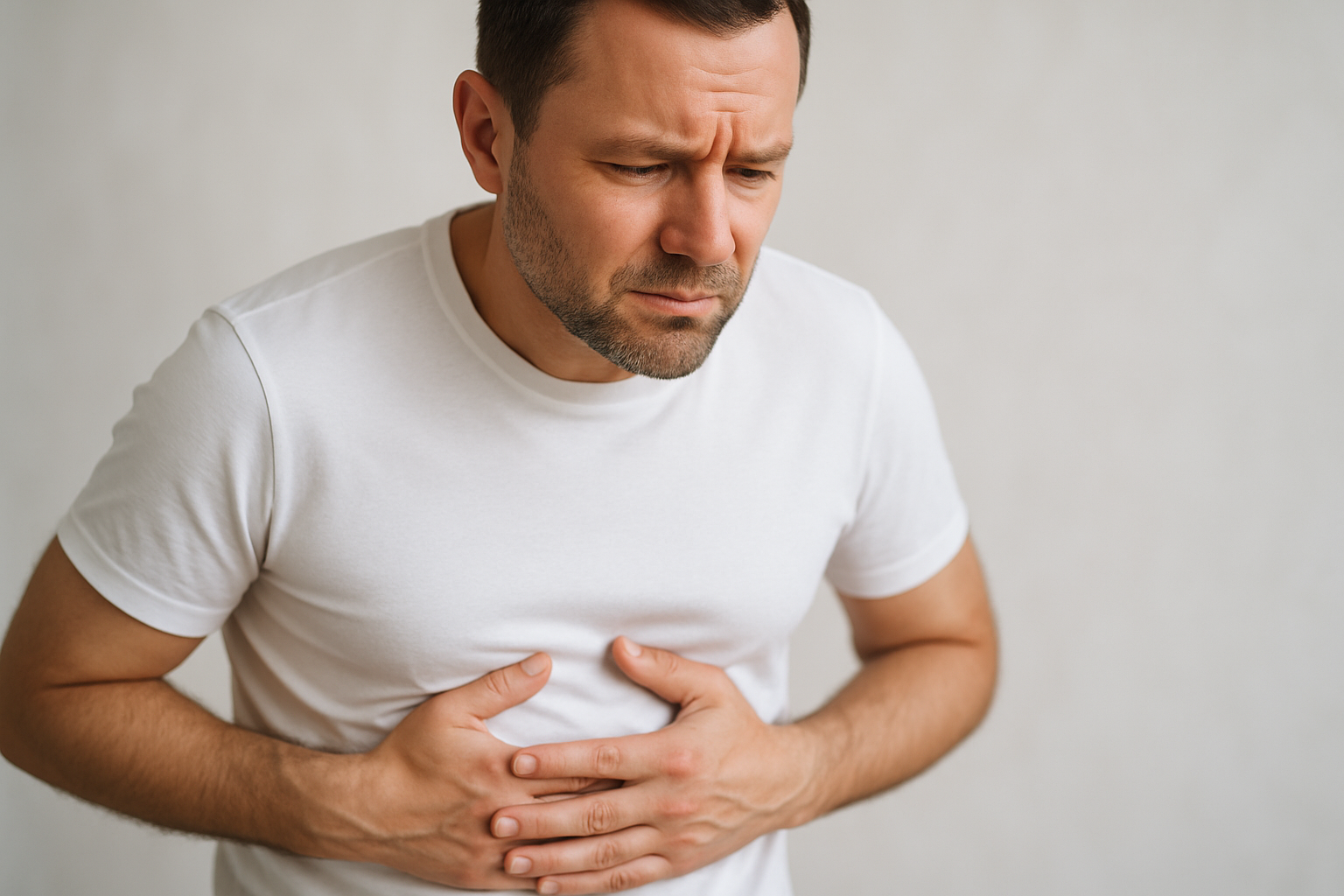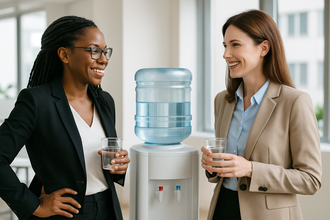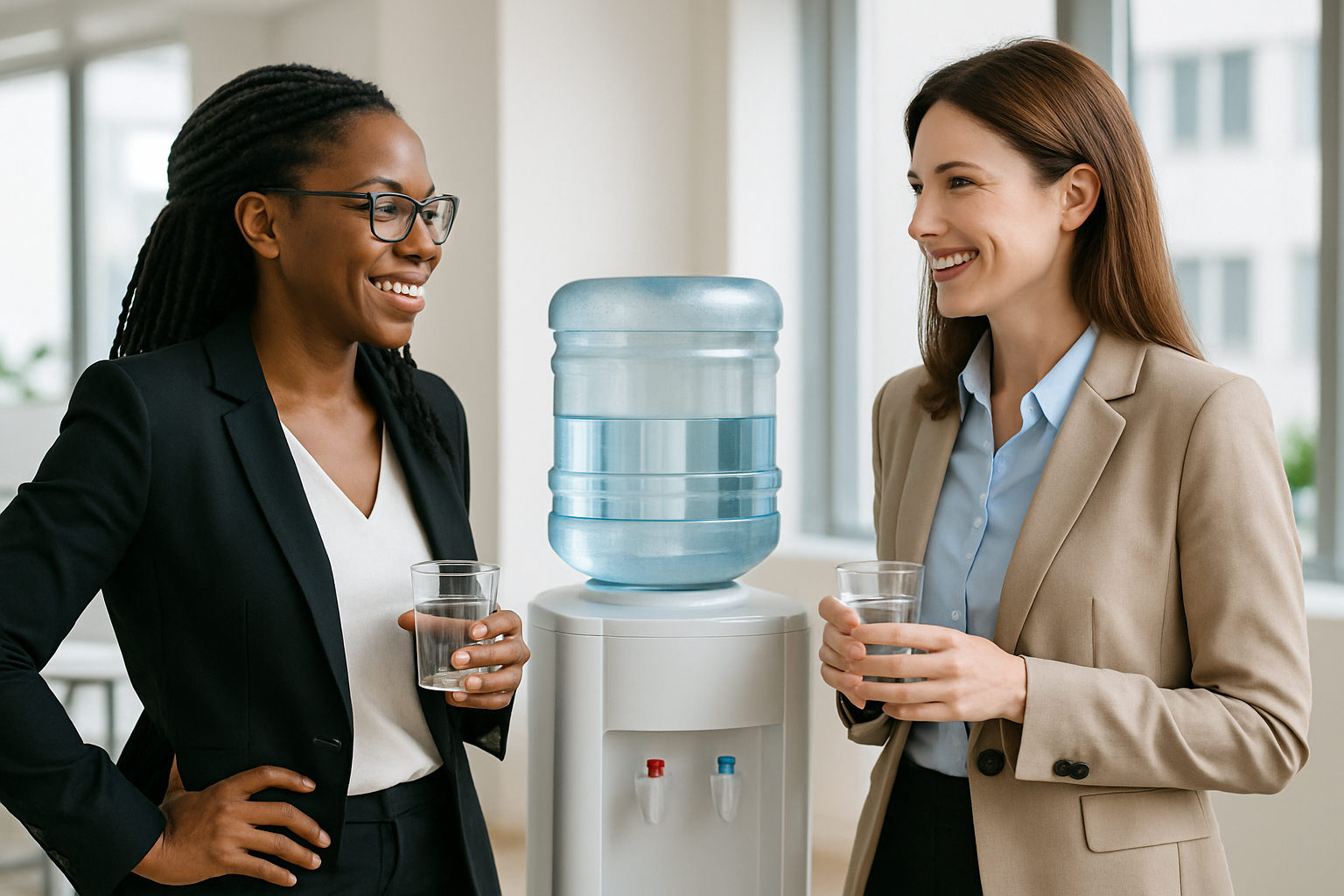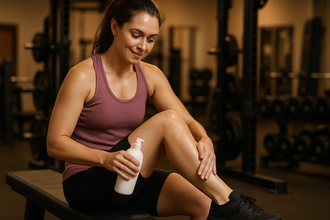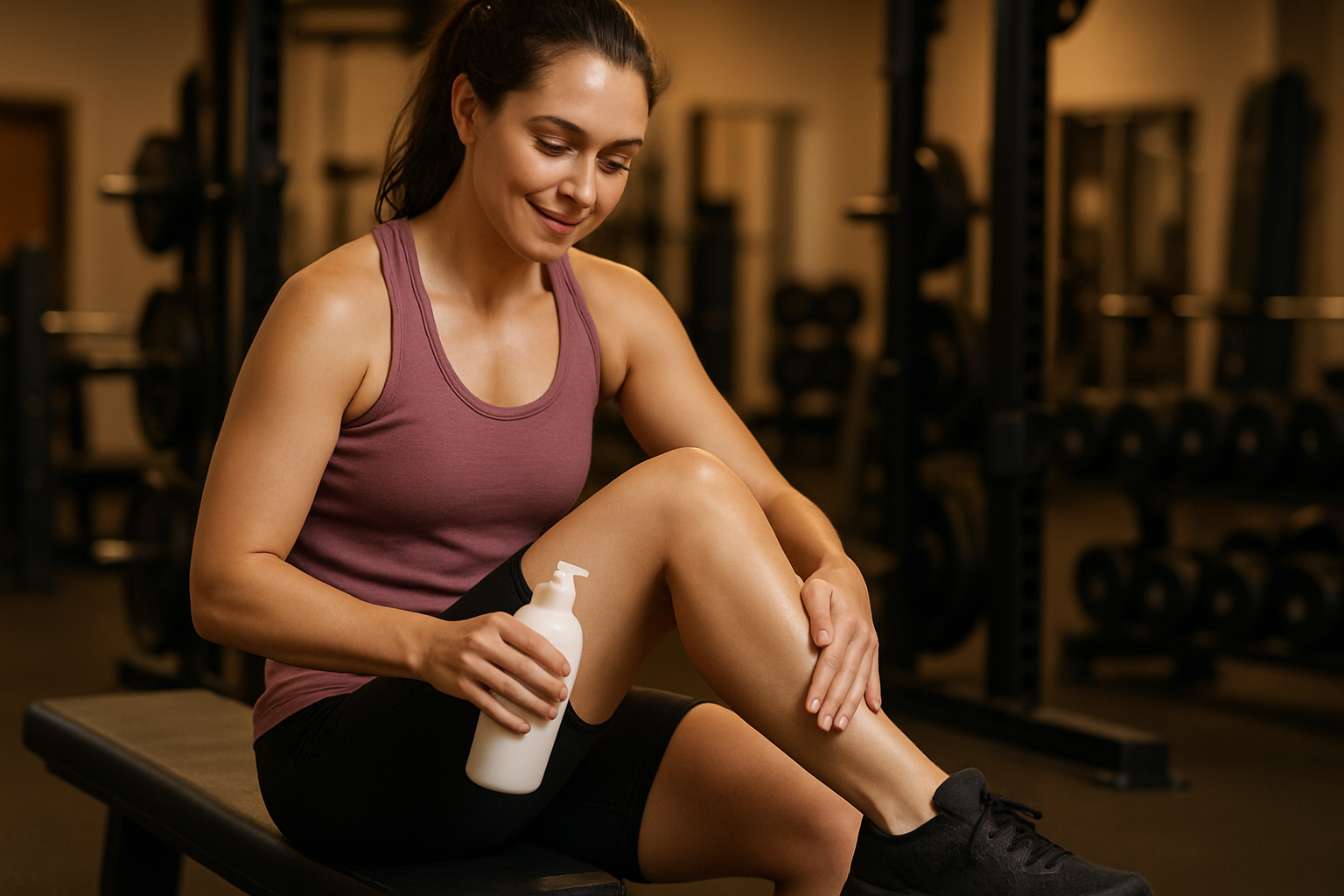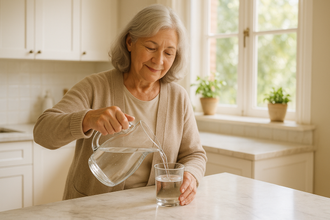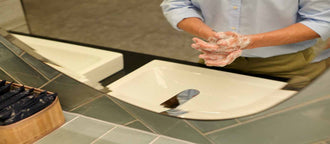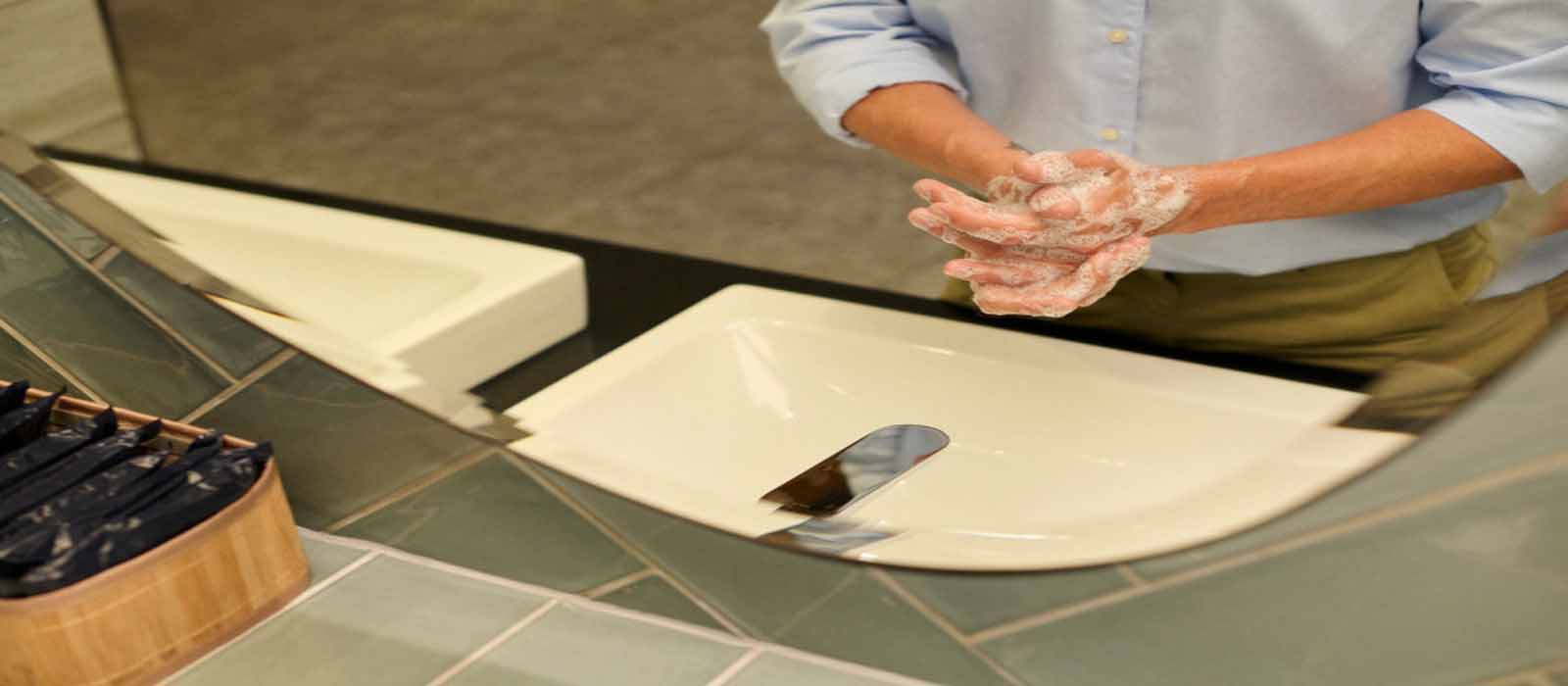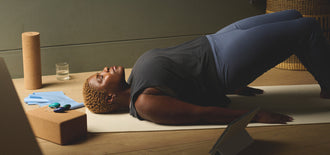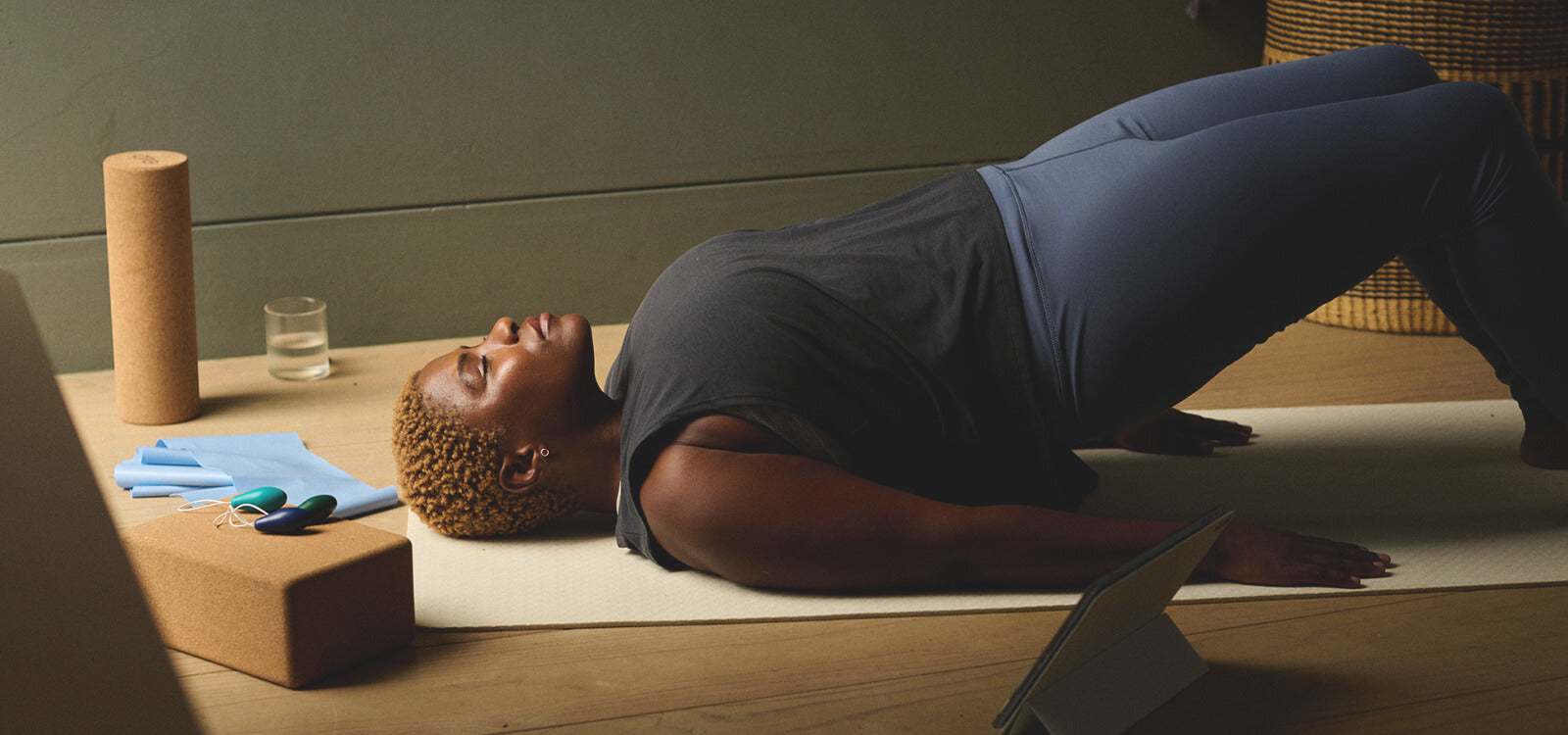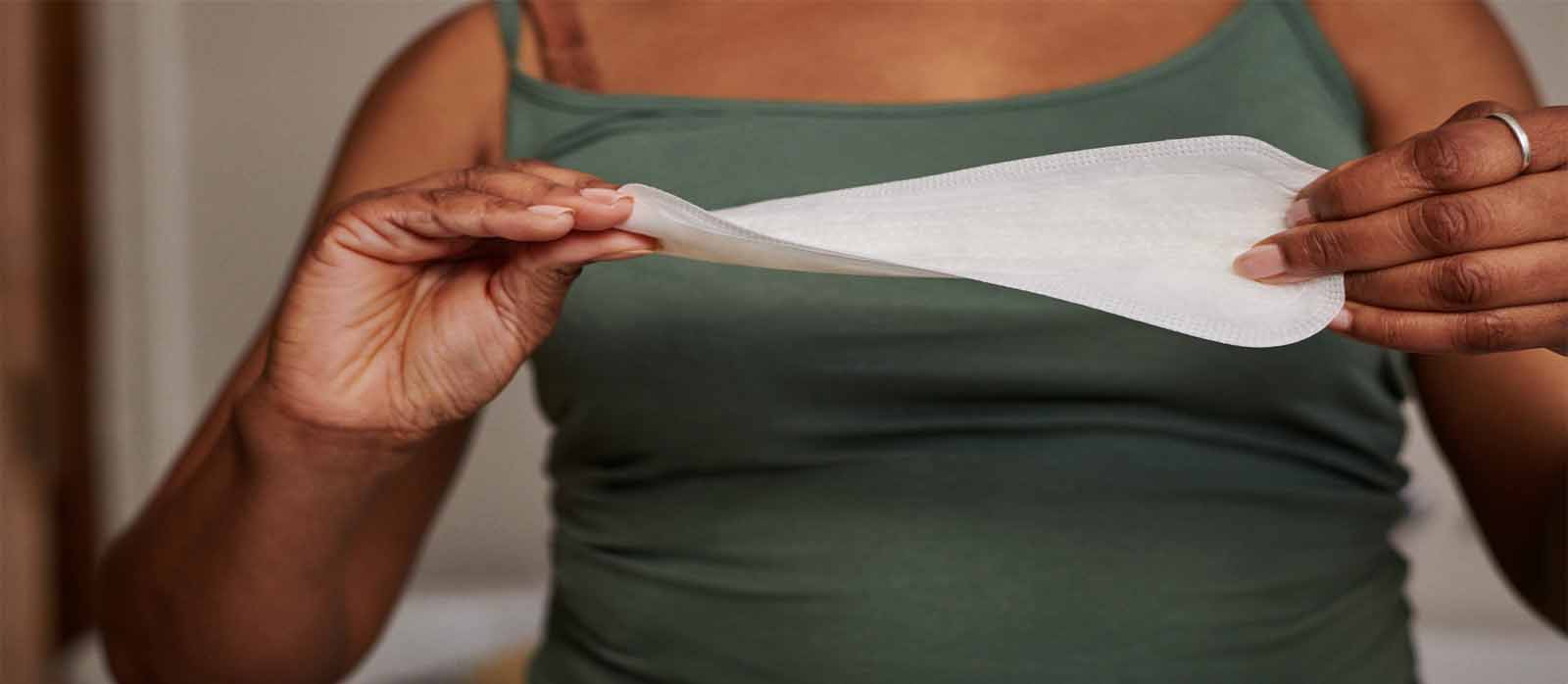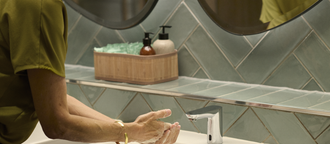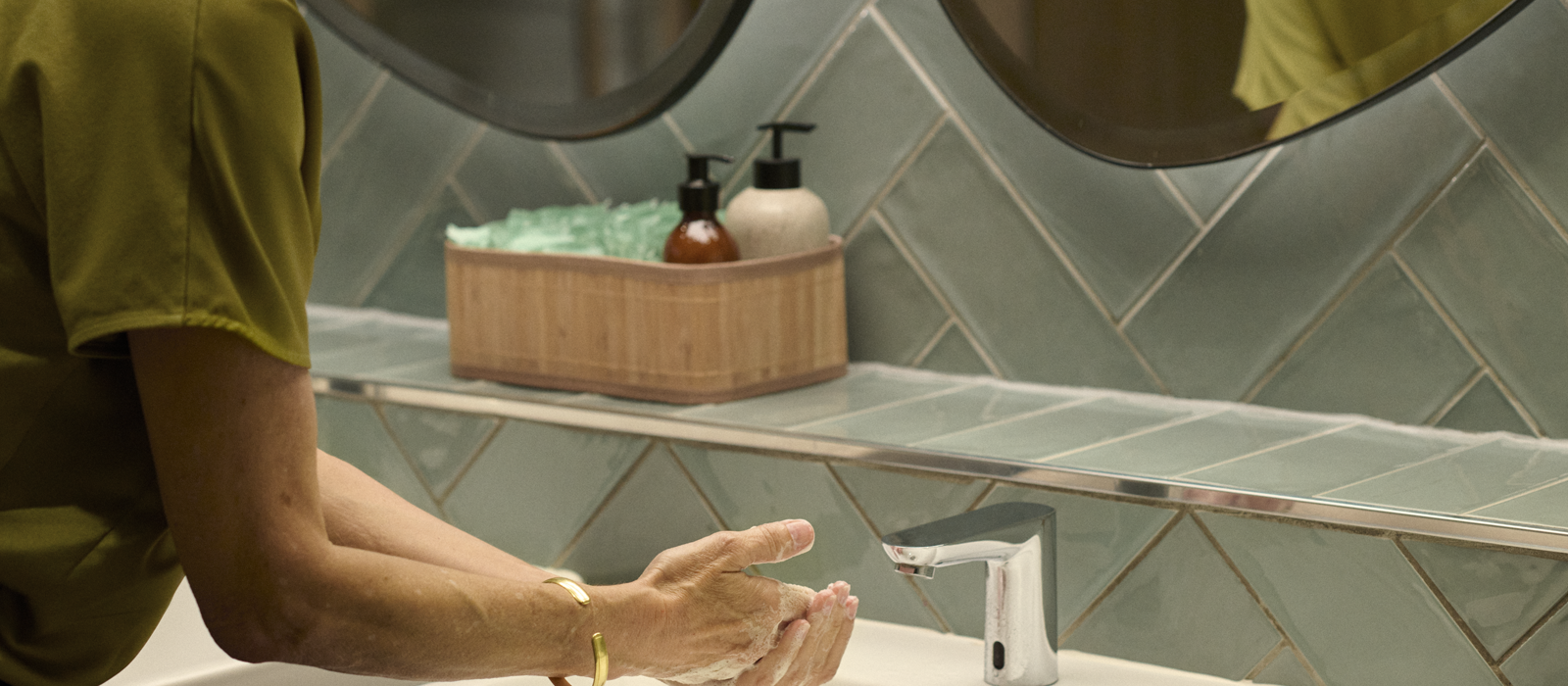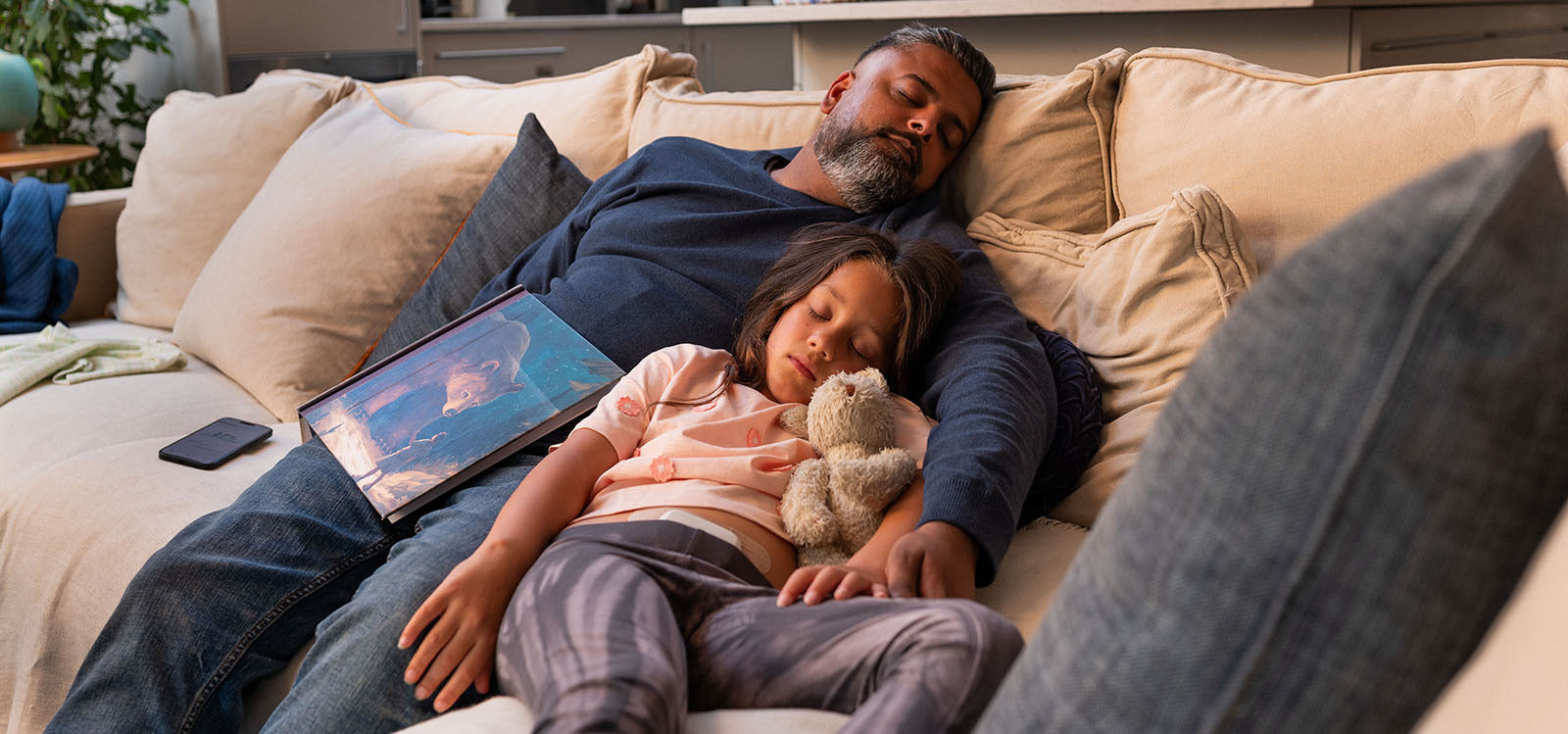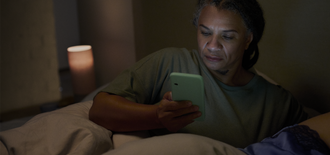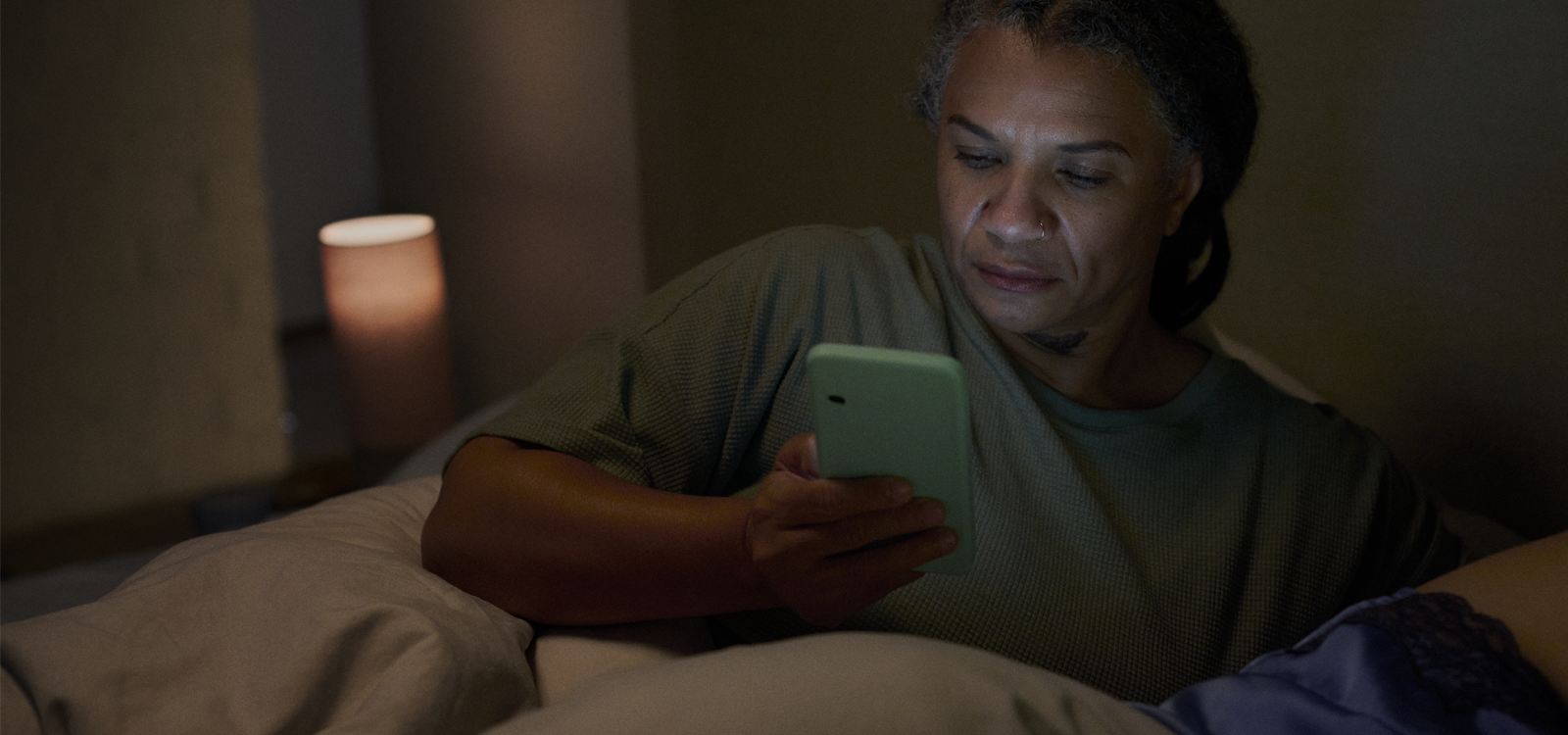Aug 26, 2025
You might hear a friend mention they’ve been diagnosed with benign prostatic hyperplasia (BPH) and wonder, “Could that be what’s causing my leaks?”
BPH is quite common among men as they get older and can sometimes lead to bladder control issues.1 Let's explore the connection between an enlarged prostate and incontinence and discover ways to help you feel confident every day.
What is an Enlarged Prostate?
Understanding Benign Prostatic Hyperplasia (BPH)
BPH is a non-cancerous condition that happens when the prostate grows larger than normal.1 As it enlarges, the prostate can press against the urethra and bladder, leading to changes in how you pee.2
It usually begins developing after 40 but becomes more common as men get older.1 In fact, about 50% of men aged 60 and older experience BPH.2
How the Prostate Affects Urination
Your prostate is a small, walnut-shaped gland that helps produce semen.3 When it becomes enlarged due to BPH, it can disrupt how urine flows by:
- Pressing against the urethra and slowing the urine stream3
- Making it harder to fully empty the bladder4
- Causing more frequent or urgent trips to the bathroom3
Learn more about the prostate and male incontinence.
Can an Enlarged Prostate Cause Incontinence?
Types of Urinary Incontinence in Men
Urinary incontinence in men with enlarged prostate can show up in a few different ways. They include:5
- Urge incontinence: You feel a sudden, strong urge to pee5
- Overflow incontinence: Your bladder doesn’t empty fully, so pee can leak out later.4,5
- Post-micturition dribble (PMD): A few drops may leak out after you finish peeing.3
- Stress incontinence: Leaks happen during activities like sneezing or laughing.6 While BPH doesn’t usually cause this type directly, it can happen after prostate surgery.7
Learn more about an overactive bladder in men.
How BPH Leads to Bladder Leaks
Think of your bladder as a fuel tank and your urethra as the fuel line. When BPH causes the prostate to grow, it squeezes the fuel line while also putting pressure on the tank, making it harder for fuel (pee) to flow out completely. Sometimes, the pressure builds up and causes leaks even when you're not expecting it.
Learn more about the causes of male incontinence.
Recognizing the Symptoms
Symptoms of an Enlarged Prostate
Here are some early BPH symptoms:8
- Difficulty starting or stopping your urine stream
- A weak or broken stream while peeing
- Difficulty emptying your bladder
- Frequent peeing at night
- Feeling a strong, sudden urge to pee
- Pain or discomfort while peeing
If you notice these symptoms, don’t ignore them. Talking to your doctor early can help prevent complications and get you feeling better sooner.8
Common Bladder Leaks Symptoms in Men
Some common bladder leak symptoms in men include:9
- Dribbles after peeing
- Leaks after actions like sneezing
- Leaks while sleeping at night
- Sudden, intense urge to pee
- Trouble making it to the bathroom on time
Diagnosis and When to See a Doctor
Physical Exams and Tests for BPH and Incontinence
After discussing your personal and family medical history, your doctor will do a physical exam.1
One key part is the digital rectal exam (DRE), where they gently check:1
- If your prostate feels enlarged
- If your bladder feels enlarged
- If there's any unusual discharge from your urethra
- If there are swollen or tender lymph nodes in your groin
To better understand your symptoms, your doctor may also order a few simple, low-risk tests:1
- A urine test (urinalysis)1
- A PSA (prostate-specific antigen) blood test 1
- A bladder scan (Ultrasonography)4
- A urine flow test (urodynamics tests)1
These tests help rule out other causes of bladder leaks before making a BPH diagnosis.
Questions to Ask Your Healthcare Professional or Urologist
During your visit with your doctor, here are some questions you can ask to help get the full picture and make informed decisions:
- Is BPH causing my bladder leaks?
- What are my treatment options?
- Could my symptoms mean something more serious?
- What other conditions could be causing my symptoms?
- What do my PSA levels mean for my prostate health?
- What can I do to help manage my symptoms?
Treatment Options for Managing Bladder Leaks
Lifestyle and Behavioral Changes
Here are some changes that may help reduce leaks and help you feel more confident:10
- Cut back on caffeine and alcohol.10
- Keep your weight in check.10
- Make sure to avoid constipation.10
- Drink enough fluids to stay hydrated.10
- Try timed voiding where you use the toilet every 2 to 4 hours, even if you don’t feel the need.10
- Avoid foods that may irritate your bladder, such as citrus fruits.5
Lear more about the best lifestyle changes for bladder health.
Medications for BPH and Bladder Control
Here are some BPH medications that your doctor may recommend to help you feel relief:1
- Alpha-blockers like tamsulosin: These relax the muscles around your prostate and bladder neck, making it easier to pee.
- 5-alpha reductase inhibitors like finasteride: These can help shrink your prostate and slow its growth.
- Phosphodiesterase-5 inhibitors like sildenafil: These may help improve some urinary symptoms in certain men.
Your doctor may also suggest a combination of alpha-blockers and 5-alpha reductase inhibitors to relieve symptoms.1 Everyone’s bodies are different, so your doctor will choose what works best for you.
If bladder leaks continue even after treating BPH, your doctor may recommend other medications depending on the type of incontinence.11 For example, for urge incontinence, they may prescribe medications that help calm the bladder muscle like oxybutynin, flavoxate, and trospium.11
Always check with your doctor before starting any new medication.
Learn more about home remedies for male incontinence.
Pelvic Floor Exercises and Bladder Training
Pelvic floor exercises, or Kegel exercises, can help strengthen the pelvic floor muscles and reduce leaks.12 You can also combine pelvic floor exercises with bladder training to help improve control over time.12
Before starting, it’s a good idea to consult a physiotherapist who can guide you through the right technique.
Here are some simple tips to get you started:12
- Relax your thighs, buttocks, and stomach while lying down or sitting.
- Focus on tightening the muscles around your anus without squeezing your thighs, buttocks, or stomach.
- Imagine pulling your penis inward and lifting your scrotum toward your belly button.
Learn more about exercising with urinary leakage for men.
Surgical Options for Enlarged Prostate
If your BPH symptoms are moderate to severe, your doctor may advise on Minimally Invasive Surgical Therapies (MIST).1 These treatments help widen your urethra or reduce the size of the prostate1 and often have good outcomes.13 Some options include:
- UroLift: Its uses small implants to hold your enlarged prostate away from the urethra.1
- Intraprostatic stents: A small device keeps the urethra open.13
- Transurethral water vapor therapy (Rezūm): It uses steam to shrink extra prostate tissue.1
Learn more about incontinence after prostate surgery.
Incontinence Products and Support
Incontinence products are a great way to help manage leaks. A high-quality product will offer features like:
- Different absorbency levels: Whether you need something for light leaks or more significant protection, there’s an option to match your needs.
- Anatomical fit: Designed to match your body's shape, helping you stay comfortable and leak-free.
- Odor control: Built-in technology helps neutralize odors, so you can feel fresh and at ease no matter what your day holds.
Here are some options you could try:
- Male Incontinence Guards: Slim, discreet, lightly absorbent for minor leaks.
- Male Incontinence Shields: Offer extra protection with a comfortable, low-bulk fit.
- Male Incontinence Underwear: High absorbency briefs that fit seamlessly under clothing.
To get you started, here are some guides for incontinence:
When to Consider Specialist Care
It's a good idea to see your urologist if you notice:14
- Your symptoms worsen, like not being able to pee at all.
- New symptoms, such as blood in your urine.
- Fever and chills, along with painful, frequent, or urgent peeing.
- Pain in your lower stomach or penis.
Remember, don't ignore your symptoms and seek help as early as possible. With the right care and support, managing bladder leaks caused by an enlarged prostate is possible, and you don’t have to navigate it alone.
References
1. National Institute of Diabetes and Digestive and Kidney Diseases. Enlarged Prostate (Benign Prostatic Hyperplasia) [Internet]. National Institute of Diabetes and Digestive and Kidney Diseases. NIDDK - National Institute of Diabetes and Digestive and Kidney Diseases; 2024. Available from: https://www.niddk.nih.gov/health-information/urologic-diseases/prostate-problems/enlarged-prostate-benign-prostatic-hyperplasia
2. WebMD Editorial Contributors. How to Make Urinating Easier If You Have BPH [Internet]. WebMD. 2023. Available from: https://www.webmd.com/men/urinating-and-bph
3. doctormmdev. Urological Associates [Internet]. Urological Associates. 2024. Available from: https://cvilleurology.com/common-signs-of-benign-prostatic-hyperplasia-bph/
4. Vasanwala FF, Wong MYC, Ho HSS, Foo KT. Benign prostatic hyperplasia and male lower urinary symptoms: A guide for family physicians. Asian Journal of Urology [Internet]. 2017 Jul;4(3):181–4. Available from: https://www.sciencedirect.com/science/article/pii/S2214388217300516
5. Georgia Prostate Institute [Internet]. Georgia Prostate Institute. 2024. Available from: https://www.gaprostate.com/patient-resources/blog/managing-bph-incontinence/
6. WebMD Editorial Contributor. Types of Urinary Incontinence [Internet]. WebMD. 2024. Available from: https://www.webmd.com/urinary-incontinence-oab/types-of-urinary-incontinence
7. Xu N, Chen SH, Xue XY, Wei Y, Zheng QS, Li XD, et al. Older Age and Larger Prostate Volume Are Associated with Stress Urinary Incontinence after Plasmakinetic Enucleation of the Prostate. BioMed Research International. 2017;2017(2314-6133):1–6.
8. Desert Sky Urology. Top 5 Early Signs of an Enlarged Prostate Every Man Should Know - Desert Sky Urology [Internet]. Desert Sky Urology. 2025 [cited 2025 Jun 12]. Available from: https://desertskyurology.com/blog/top-5-early-signs-of-an-enlarged-prostate-every-man-should-know/
9. Male Urinary Incontinence | Causes & Treatment [Internet]. The Urology Partnership. Available from: https://theurologypartnership.co.uk/conditions/male-incontinence/
10. NIHAging. Urinary Incontinence in Older Adults [Internet]. National Institute on Aging. 2022. Available from: https://www.nia.nih.gov/health/bladder-health-and-incontinence/urinary-incontinence-older-adults#treating-and-managing-urinary-incontinence
11. Dr Toni Hazell. Medicines for urinary urgency and incontinence [Internet]. Patient.info. 2023 [cited 2025 Jun 13]. Available from: https://patient.info/womens-health/lower-urinary-tract-symptoms-in-women-luts/medicines-for-urinary-urgency-and-incontinence#what-are-medicines-for-urinary-urgency-and-incontinence-used-for
12. Pelvic Floor Exercises for Men [Internet]. 2016 Jun [cited 2025 Jun 12]. Available from: https://www.bladderandbowel.org/wp-content/uploads/2017/05/BBC030_Pelvic-Floor-Men.pdf
13. Srinivasan A, Wang R. An Update on Minimally Invasive Surgery for Benign Prostatic Hyperplasia: Techniques, Risks, and Efficacy. The World Journal of Men’s Health. 2020;38(4):402.
14. Veazey K. What Are the Warning Signs of an Enlarged Prostate? [Internet]. Healthline. Healthline Media; 2023 [cited 2025 Jun 13]. Available from: https://www.healthline.com/health/enlarged-prostate/enlarged-prostate-symptoms#faq














